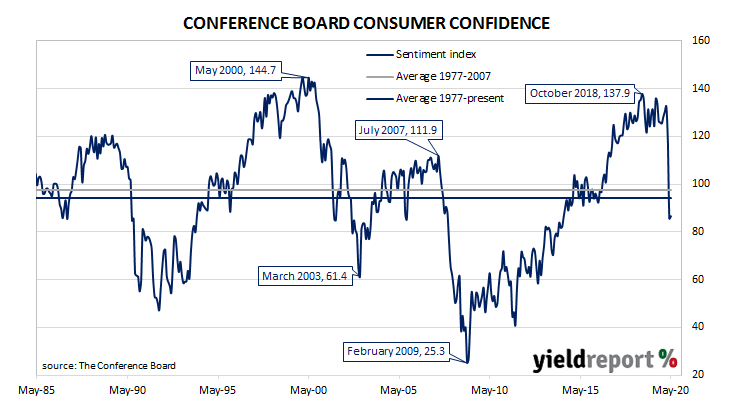Summary: US consumer confidence stable; present conditions slip further; bond yields increase despite firmer expectations of Fed cut; uneven recovery path, potential second wave to maintain consumer uncertainty.
US consumer confidence collapsed in late 2007 as the US housing bubble burst and the US economy went into recession. By 2016, it had clawed its way back to neutral and then went from strength to strength until late 2018. Measures of consumer confidence then oscillated within a fairly narrow band at historically high levels until they collapsed again through March and April.
The latest Conference Board survey held during the first half of May indicates US consumer confidence has stabilised at a below-average level after it nosedived in April. May’s Consumer Confidence Index registered 86.6, broadly in line with the median consensus figure of 87 and just above April’s final figure of 85.7. Compared to consumers’ views held at the time of the April survey, their views of present conditions slipped a little while their views of future conditions improved modestly.
Lynn Franco, a senior director at the Conference Board said, “Short-term expectations moderately increased as the gradual re-opening of the economy helped improve consumers’ spirits.”
Longer-term US Treasury bond yields increased as a “risk on” attitude was taken. By the end of the day, the yield on 2-year Treasury bonds was unchanged at 0.17% while the 10-year yield had gained 4bps to 0.70% and the 30-year yield had increased by 7bps to 1.44%.
However, in terms of US Fed policy, expectations of a reduction in the federal funds rate over the next 12 months firmed somewhat. OIS contracts from April 2021 onwards implied a zero effective federal funds rate whereas they had implied a zero rate in September 2021 at the end of the previous day.

